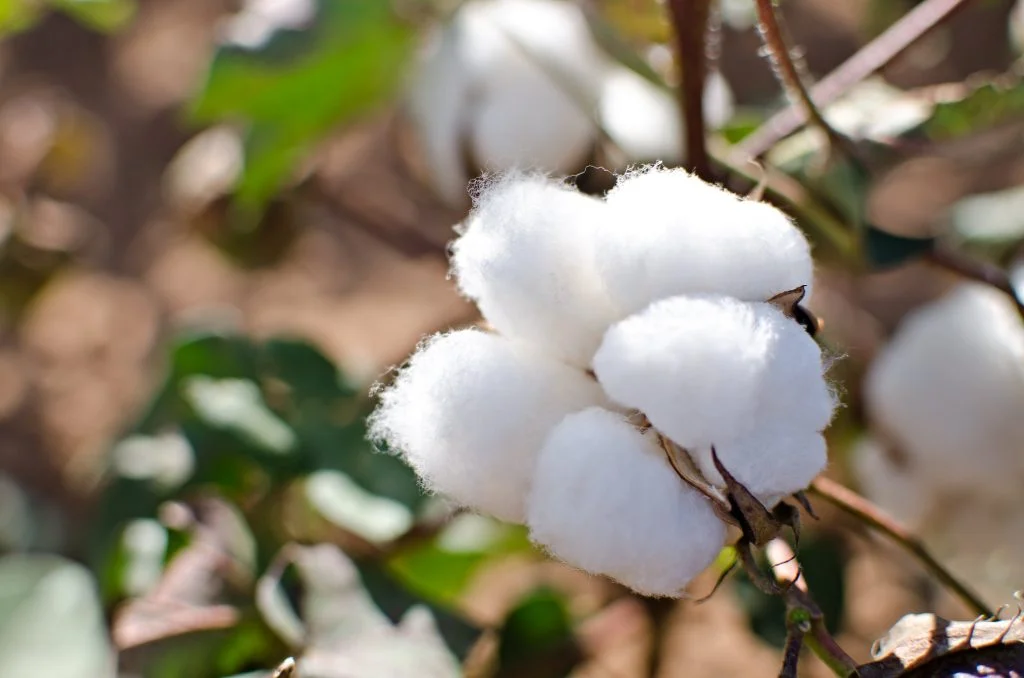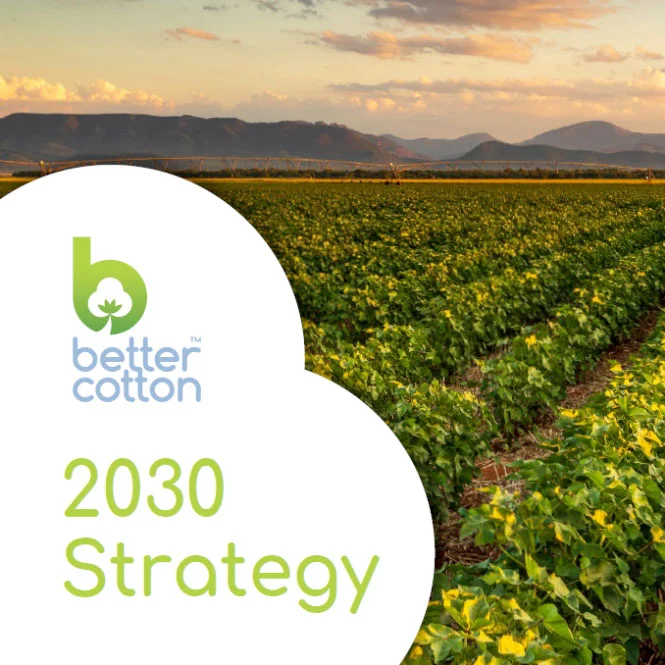- Who we are
- What we do
In just over 10 years we have become the world’s largest cotton sustainability programme. Our mission: to help cotton communities survive and thrive, while protecting and restoring the environment.
- Where we grow
Better Cotton is grown in 22 countries around the world and accounts for 22% of global cotton production. In the 2022-23 cotton season, 2.13 million licensed Better Cotton Farmers grew 5.47 million tonnes of Better Cotton.
- Our impact
- Membership
Today Better Cotton has more than 2,700 members, reflecting the breadth and diversity of the industry. Members of a global community that understands the mutual benefits of sustainable cotton farming. The moment you join, you become part of this too.
- Associate Membership
- Civil Society Membership
- Producer Organisation Membership
- Retailer and Brand Membership
- Supplier and Manufacturer Membership
- Find Members
- Member Monitoring
- Better Cotton Platform
- myBetterCotton
- Resources – Better Cotton Conference 2022
- Complaints
- Whistleblowing
- Safeguarding
- Get Involved in the Better Cotton Programme
- Thank you for contacting us
- Better Cotton’s Data Privacy Policy
- Log in
- Members’ Area
- Request for Proposals
- Better Cotton Cookie Policy
- Web Reference
- Measuring Cotton Consumption
- How to Implement the Chain of Custody Standard
- Resources – Better Cotton Conference 2023
- Certification Bodies Old
- Latest
- Sourcing
- Latest
The founding premise of Better Cotton is that a healthy sustainable future for cotton and the people that farm it is in the interests of everyone connected with it.
Let us help you find what you’re looking for
Results for {phrase} ({results_count} of {results_count_total})Displaying {results_count} results of {results_count_total}
The Better Cotton Initiative’s (BCI) Retailer and Brand Members are forging the way for more sustainable cotton production by integrating Better Cotton into their raw material sourcing strategies and driving demand for more sustainable practices worldwide.
In 2018, 92 BCI Retailer and Brand Members sourced more than one million metric tonnes of Better Cotton – a record for BCI! This represents 4% of global cotton consumption*. BCI’s demand-driven funding model means that retailer and brand sourcing of Better Cotton directly translates into increased investment in training for cotton farmers on more sustainable practices.
While all BCI Retailer and Brand Members are contributing to the sustainable future of cotton, we would like to take this opportunity to highlight some of the leaders. The following members are the top 15 (in descending order) based on their total Better Cotton sourcing volumes in the 2018 calendar year. Together they represent a significant proportion (88%) of the Better Cotton that was sourced last year.
1 – Hennes & Mauritz AB
2 – IKEA Supply AG
3 – Gap Inc.
4 – adidas AG
5 – Nike, Inc.
6 – Levi Strauss & Co.
7 – C&A AG
8 – PVH Corp.
9 – VF Corporation
10 – BESTSELLER
11 – DECATHLON S.A.
12 – Target Corporation
13 – Marks and Spencer PLC
14 – Tesco
15 – OVS Spa
Access the Better Cotton Leaderboard 2018.
”Since September 2015, all of the cotton we source for IKEA products is responsibly sourced – 85% of that is sourced as Better Cotton.It took a decade of determination and hard work to embed sustainability into our supply chain and we are pleased to have reached our 100% sustainable cotton target. We won’t stop there though. We are committed to creating positive change throughout the entire cotton industry and continue to collaborate with our partnersto make this a reality,” says Rahul Ganju, Sustainability Manager Textiles, IKEA of Sweden.
“Cotton is our main raw material and it’s a natural choice for our consumers. However, we know that being natural doesn’t necessarily mean being sustainable. That’s why, in 2016, we decided to source only more sustainable cotton by 2020. BCI represents a core pillar in our strategy to reach that goal as the initiative increases cotton farmers’ capabilities to adopt sustainable agricultural practices and focus on continuous improvement,” says Simone Colombo, Head of Corporate Sustainability, OVS Spa.
“BESTSELLER joined BCI in 2011 and we’ve been an active member since then. We’ve increased our uptake of Better Cotton year on year and invested in farmer training and support. BESTSELLER has a target to source 100% of its cotton more sustainably by 2022 – to achieve this we source Better Cotton, Cotton made in Africa, organic cotton and recycled cotton,” says Dorte Rye Olsen, Sustainability Manager, BESTSELLER.
In addition to considering the absolute volumes of Better Cotton sourced, the proportional amount of Better Cotton as a percentage of total cotton consumption is important to highlight. For some Retailer and Brand Members, Better Cotton accounts for a substantial percentage of their total cotton sourcing. In 2018, the companies who sourced more than 90% of their cotton as Better Cotton were adidas AG, HEMA BV and Stadium AB. Decathlon SA, Fatface Ltd, Hennes & Mauritz AB, and IKEA AG sourced more than 75% of their cotton as Better Cotton.
The “fastest movers’ of 2018 (listed in alphabetical order) are Benetton, Burberry Ltd, Fatface Ltd, GANT AB, Gap Inc., HEMA BV, La Redoute, Nike Inc., Olymp Bezner KG, Peak Performance, PVH Corp. and Stadium AB. These retailers and brands increased their volumes of cotton sourced as Better Cotton by more than 20 percentage points compared to 2017, demonstrating that sourcing cotton more sustainably can become the norm for organisations of all sizes.
BCI has a goal to reach and train fivemillion cotton farmers by 2020.In order to achieve this, BCI calls upon its current Retailer and Brand Members as well as new members to be as ambitious as possible in setting Better Cotton sourcing targets. Increased sourcing generates essential funding for farmer training and support. We’re pleased to note that of BCI’s current 125 Retailer and Brand Members, 27 already have a public target to source 100% of their cotton more sustainably by 2020. An additional 23 members have sustainable sourcing targets that are set for just beyond 2020.
We’re now looking for the next wave of sustainability leaders to join BCI and close the gap between the supply of Better Cotton on the market (19% of global cotton production in the 2017-18 cotton season) and demand from Retailer and Brand Members (4% of global cotton consumption in the 2017-18 cotton season*). In the 2019-20 cotton season, Better Cotton is forecast to account for 30% of global cotton production.
Access the Better Cotton Leaderboard 2018.
As demand for Better Cotton increases, more and more organisations throughout the cotton supply chain are joining BCI and supporting increased uptake of Better Cotton. In the coming weeks, we will launch cotton merchant and cotton mill leaderboards, highlighting who sourced the largest volumes of cotton as Better Cotton in 2018.

*Global cotton consumption figures as reported by ICAC. More information is availablehere.


